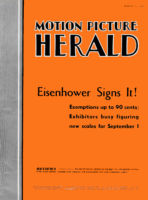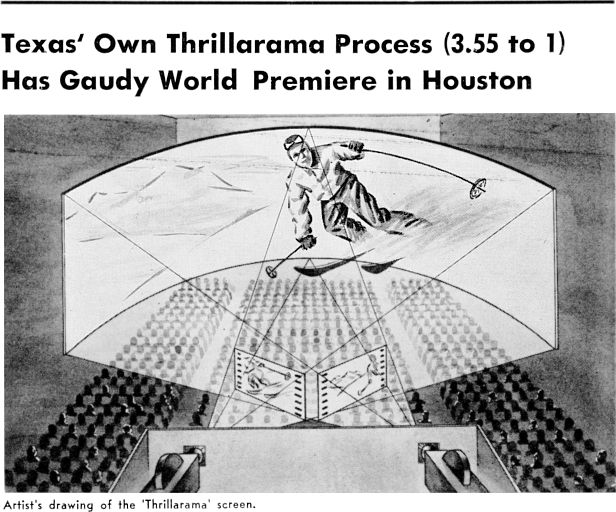
During the first decade of the wide screen revolution a number of systems were devised, most were still born and a few had brief lives. THRILLARAMA was one of those systems that just didn't have a lot to offer, other than it was a much cheaper system to use than systems like Cinerama and Cinemiracle. Very little information survives on the technical specifications of Thrillarama. In the theatre, all that was required was to alter the positions of the typical two projectors so that they butted their images against each other. A device of some sort was used to help blend the seam which is in the center of the image, the worst possible place to have a division in a picture. The screen was apparently capable of being installed and removed quickly, which turned out to be a bit of a blessing as installation and removal dates weren't that far apart. The sound system is not discussed in any information we've discovered thus far. The extreme wide aspect ratio is a bit difficult to justify. Utilizing the optimum amount of image area on the films would yield a ratio of 2.66:1. Anything "wider" than that represents a reduction in the height of the frames on the film. Also no mention is made of the amount of screen curvature or the range of photographic angles that the system could record. Had it lived more than a couple of months we probably would have a lot more information to give you. It is interesting to note that the Houston run of Thrillarama was so successful that it was extended by ONE DAY. Cinerama bookings were measured in terms of months by comparison. This article appeared in the August 11, 1956 issue of MOTION PICTURE HERALD.

|
PART 2
BACK TO MAYFLIES
Original text © copyright The American WideScreen Museum. See terms of use for information regarding other content.